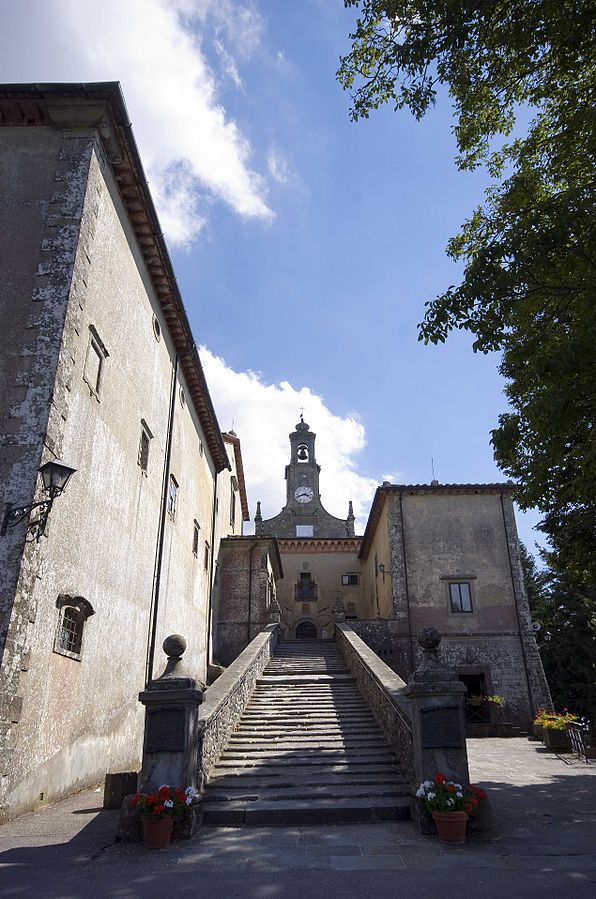
The Seven Founders of the Servite Order commemorate the group of cloth merchants who in 1233 left everything to follow Christ, with a special devotion to the Virgin Mary, particularly in her own union in the Passion of her Son under the title of Our Lady of Sorrows. They even developed their own special rosary meditating on her ‘seven sorrows’.
All the founders hailed from the historical city of Florence – which also gave us such notables as Dante Alighieri, da Vinci, Savonarola, Saint Philip Neri, Galileo, to name but a few. They retreated from the world to live in community on the nearby Mount Senario overlooking the city, where this first monastery still stands.
After some initial travails and setbacks – the Second Council of Lyons in 1274 had forbidden any new orders, but such disciplinary decrees can be waived. The Servites were eventually approved by Pope Benedict XI on the propitious day of February 11, 1304 – the future first visit of the Mother of God to Bernadette Soubirous, and the memorial of Our Lady of Lourdes. Their official name is Ordo Servorum Beatae Mariae Virginis, the Order of the Servants of the Blessed Virgin Mary.
As today’s Office describes their founding:
They climbed the heights of Monte Senario and built on its summit a little house that would suit their purpose, and there they lived in common. As time passed, they began to realise that they were called not simply to sanctify themselves but to receive others into their community, and so increase the membership of this new order our Lady had inspired them to found. They recruited new members; some they accepted, and thus established our present order. In the beginning our Lady was the chief architect of this new order which was founded on the humility of its members, built up by their mutual love, and preserved by their poverty.
The Seven Holy Founders were canonized by Pope Leo XIII in 1888. Saint Philip Benizi da Damiana (+1285) propagated the Order as their first general. The Servites, which includes both men’s and women’s branches, now have houses throughout the world, with a number beautiful churches dedicated to Our Lady, counted amongst the most beautiful in the world.
These men who left everything were seeking a ‘utopia’, a term coined by Saint Thomas More in his eponymous 1516 book, describing a quasi-ideal society (although whether he meant it as a kind of ironic and veiled critique of Henry VIII’s England is another question). The word literally means ‘no place’, but is itself a play on words, with the homophonous ‘eu-topia’, which means a ‘good place’. Attempts at secular utopias – think hippie communes and attempts at communism – eventually fail. Only when bound together by true charity, and with few ties and attachments to this world, can they really succeed. As in, something like the Servites.
Behold, how good and pleasant it is
when brothers dwell in unity! (Psalm 133:1)
We could use more true ‘service’ in the world, those who do good not for what accrues to them, but for others. And not just one’s own vague, emotive notion, but the true good, in light of revelation and eternity.
Our Lady will show you the way, if we but ask.
Holy Servites, orate pro nobis!
